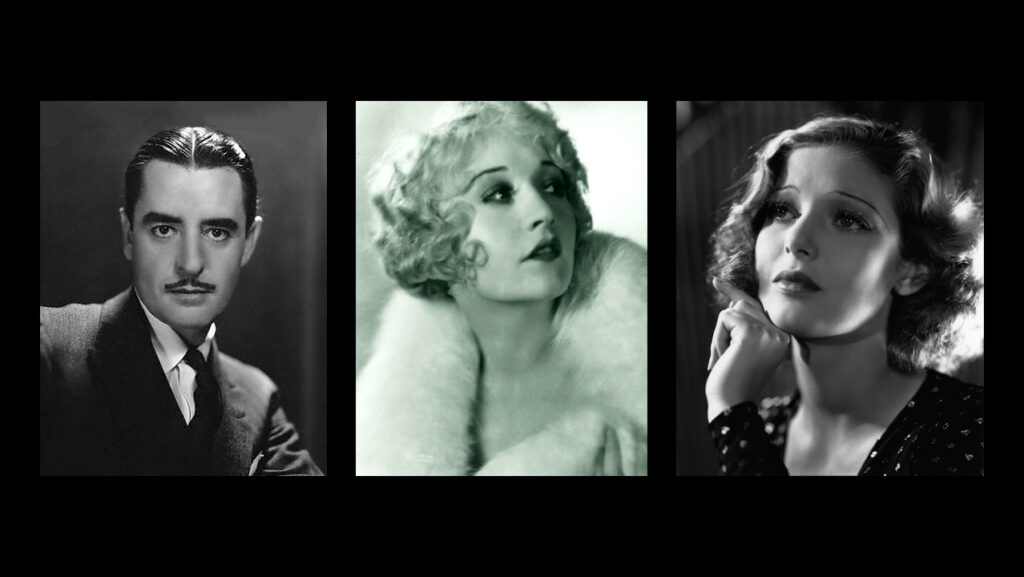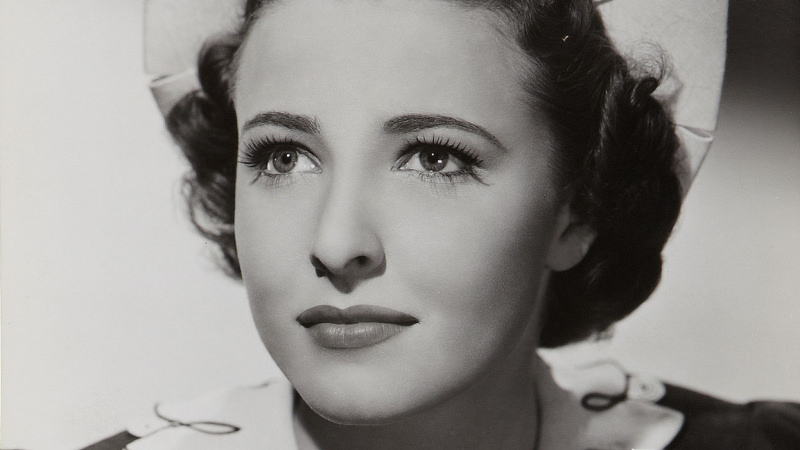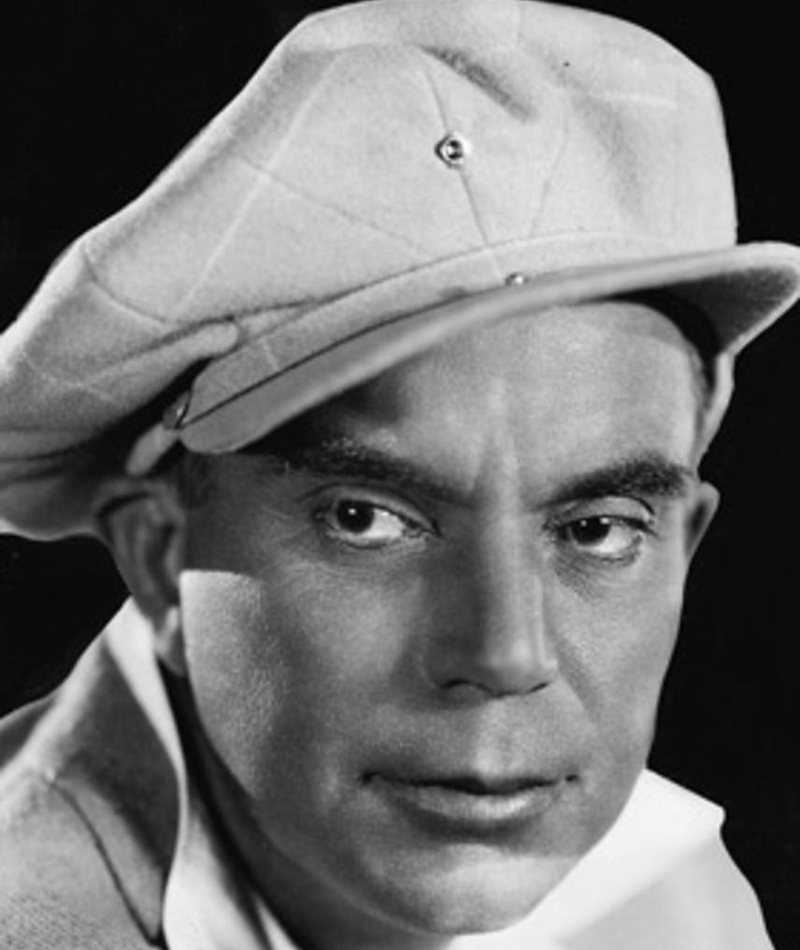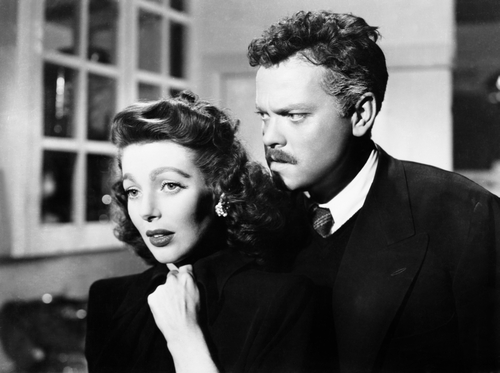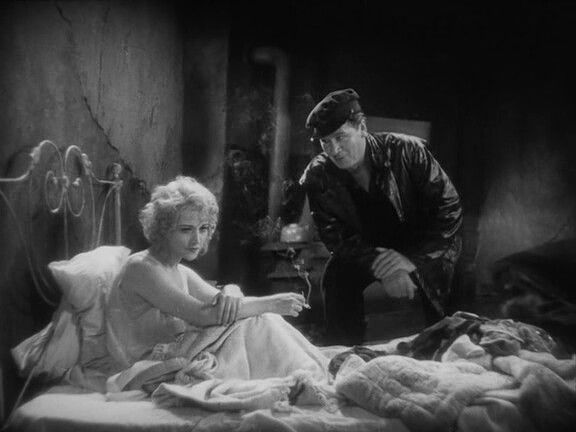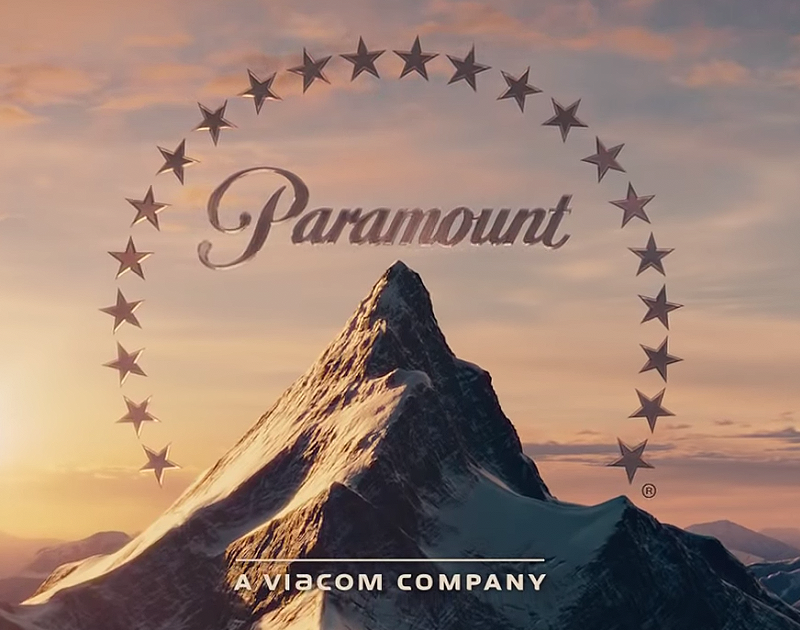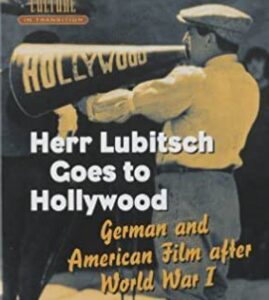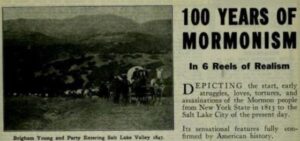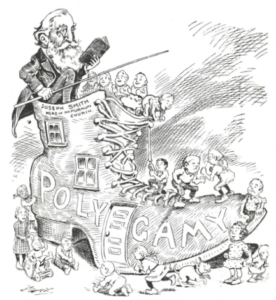This post is the third historical overview in my series Celebrating 125 Years of Utah and the Movies. Visit the series page for other historical overviews and reviews of films shot in Utah or made by Utahns.
While Utah failed to compete as an independent film production center in the first half of the 20th century, numerous Utahns moved to Los Angeles and contributed to some of the most notable and beloved films of the classic Hollywood era. Many of these Utahn actors, directors, and artists maintained a relationship with the state throughout their lives, either returning to shoot their films on-location in the state or returning to Utah after retirement.
Without any further ado, here are ten famous classic filmmakers from Utah plus several viewing recommendations that best showcase each star’s talents:
Frank Borzage
The son of Italian and Swiss Catholic immigrants, Frank Borzage (pronounced Bor-zay-gee) was born in Salt Lake City in 1894. Working in a silver mine in Park City, a teenage Borzage saved up enough money to enroll in a Salt Lake City drama school. There he gained his first experience as an actor performing on a tour of Ogden, Kaysville, and Layton. Borzage moved to Hollywood as a young adult in the early 1910s, appearing in over 100 short films before he turned exclusively to directing in 1918.
Borzage established himself as one of the industry’s most reliable directors, working steadily for Hollywood’s major studios from the late 1910s until the 1950s. While largely forgotten compared to many of his contemporaries, his career has been favorably reevaluated by modern critics and historians over the past several decades.
Touted in his prime as Hollywood’s No. 1 Director of Melodramas, Borzage’s films often center on young romantic couples overcoming immense obstacles such as war, poverty, social prejudice, and political turmoil. Borzage’s best films manage to both capture the beauty of human connection and love while squarely facing the injustices of the world—all without relying on melodramatic sentimentality.
Recommend Viewing: 7th Heaven (1927), A Farewell to Arms (1932), History is Made at Night (1937), Moonrise (1948)
John Gilbert
Known to screen audiences of the 1920s as “The Great Lover”, John Gilbert became one of the most popular screen presences in film history. Born John Cecil Pringle (not a name that screams box office draw) in 1897 near Logan, Utah to two stock-company actor parents, John spent a large portion of his childhood living at his grandfather’s Logan farm when not traveling on the vaudeville circuit with his mother. Having become accustomed to the big cities he visited on his mother’s tours, John never felt like he fit in amongst the quiet life of his Mormon farming relatives. Following his mother’s death when he was 14, he struck out on his own to San Francisco, never looking back.
After occupying a few odd jobs, Gilbert followed in his mother’s footsteps and started performing on the stage. Struggling to find consistent work, he ventured into the motion pictures as an extra at Thomas Ince Studios in 1915. By the mid-1920s, John had steadily built up to playing bigger roles, first as a young ingenue, a villain, and then finally as a romantic leading man. By the height of his stardom in the mid-1920s at MGM, John Gilbert became the biggest box office draw only rivaled by Rudolph Valentino.
With the arrival of sound films took in the late 1920s, Gilbert struggled to keep his star status and fell into alcoholism, suffering a fatal heart attack in 1937 at the young age of 39. Today, Gilbert is best known for his romantic roles opposite icon Greta Garbo and their highly publicized off-screen romance.
Recommended Viewing: The Big Parade (1925), Desert Nights (1928), Queen Christina (1933)
Laraine Day
Descendant of influential 19th century LDS Apostle Charles C. Rich, Laraine Day was born in Roosevelt, Utah in 1920. She began acting as a teenager when her family moved to California. After being spotted by an MGM talent scout, Day played a few bit parts before getting her chance as the lead in a handful of B-Westerns. Dubbed as “The Girl Next Door”, Day continued getting leads opposite such bonafide stars as Robert Mitchum, John Wayne, and Cary Grant and under the direction of Hollywood legends like Cecil B. DeMille and Alfred Hitchcock.
While Day never established star status despite her steady work in film, spending most of her time after the 1940s in television, she is unique for having been openly Mormon throughout her life. Early on in her career, Day established a playhouse in Los Angeles specifically for Mormon actors. She reportedly followed the strict Mormon health code by never smoking, drinking, or swearing throughout her career. Near the end of her life, she moved back to Utah to live with her family and died in 2007.
Recommend Viewing: Foreign Correspondence (1940), The Locket (1946), Tycoon (1947)
Moroni Olsen
A character actor that played small supporting roles in some of Hollywood’s most memorable films of the 1930s, 40s, and 50s, the Ogden-born Moroni Olsen started acting at Weber Stake Academy, now Weber State University. After studying drama and elocution at the University of Utah, Olsen returned to Ogden and organized The Moroni Olsen Players, a small group of semi-professional actors in the region. After touring in several states in the West with his stock company and subsequently appearing on Broadway, Olsen moved to Hollywood for his screen debut as Porthos in 1935’s The Three Musketeers.
Olsen never became a recognizable star but found consistent work in the pictures over his nearly twenty-year film career. It is perhaps all too fitting that in his most influential role, as the voice of the Magic Mirror in Disney’s first feature film Snow White and the Seven Dwarves, he went uncredited. Despite a bevy of similarly uncredited roles, Olsen was well respected in the industry and appeared in such classics as Frank Capra’s It’s A Wonderful Life, Alfred Hitchcock’s Notorious, and the 1950 Father of the Bride. Despite making it big in Hollywood, Olsen frequently returned to Utah to perform benefit events for his alma maters up until his death in 1954.
Recommended Viewing: Snow White and the Seven Dwarves (1937), Mildred Pierce (1945), Notorious (1946)
Natahsa Rambova
Rambova’s modernist costume and production design in Alla Nazimova’s Salome.
The great-granddaughter of early Latter-day Saint apostle Heber C. Kimball, Natacha Rambova was born Winifred Kimball Shaughnessy in Salt Lake City in 1897 to a wealthy family. Taking up ballet while living abroad in Europe as a teen, Winifred adopted the stage name Natacha Rambova while dancing in the New York-based Imperial Russian Ballet Company. At age 19, she relocated to Los Angeles landing her first job in the film industry designing costumes for Cecil B. DeMille. Although today she is best known for her marriage to silent superstar and screen idol Rudolph Valentino, her biggest mark on cinematic history is her accomplishments in film production and costume design.
Working on several films as an art director and costume designer in the 1920s, Rambova brought modern art deco style to Hollywood filmmaking. The strange combination of ancient styles and art deco designs make Rambova’s sets and costumes pop off the screen and create worlds that remain bold and unique, rarely matched in subsequent silent or sound cinema. After her divorce from Valentino in 1925, Rambova moved on from film but continued designing clothing for A-list Hollywood actresses. Later in life, she became a respected Egyptologist and eventually donated her extensive collection of Egyptian artifacts to the University of Utah’s Museum of Fine Arts.
Recommended Viewing: Why Change Your Wife? (1920), Camille (1921), Salome (1922)
Fay Wray
Even if you’ve never heard the name Fay Wray, you’ve likely heard her scream. Dubbed “The Scream Queen”, Wray gained cinematic immortality playing the beauty who killed the beast in the original 1933 King Kong. While she was born in 1907 in the small Mormon settlement of Cardston, Alberta, Wray largely grew up in her mother’s hometown of Salt Lake City. Moving to Hollywood in her late teens, Wray first appeared in short comedies at Hal Roach Studios in the early 1920s.
After being named a 1926 WAMPAS Baby Star, her career picked up steam, landing her first lead role in Erich von Stroheim’s 1928 silent epic The Wedding March. Following her successful transition to sound, Wray appeared in several horror and adventure films that her reputation largely rests on today. After a lengthy career in television that continued through the 1980s, Wray passed away in 2004.
Recommend Viewing: The Wedding March (1928), Mystery of the Wax Museum (1932), King Kong (1933)
James Cruze
James Cruze’s early years are marred in mystery thanks to the outlandish, dramatized, and contradictory narratives of his life painted in early Hollywood fan magazines; however, it is certain that he was born in 1884 near Ogden, Utah. Raised by Danish Mormon immigrants, Cruze ran away from home as a teenager and wound up in a traveling stock company after taking up several odd jobs. By 1910, he entered the movies as an actor and became a popular leading man at the New York-based Thanhouser studios in the mid-1910s. After breaking his leg when a stunt went wrong, Cruze tested out his hand as a director, becoming a reliable filmmaker for Paramount Studios over the next several years.
His claim to fame saw him return to Utah to shoot one of the first epic, prestige Westerns. Cruze’s 1923 The Covered Wagon is a dramatic reenactment of two wagon caravans traversing the Great Plains on their trek to Oregon. Employing numerous local Utahns and nearly a thousand Native Americans from Idaho as extras, Cruze shot this pioneering (pun intended) Western on location in Millard County on the Utah-Nevada border. The Covered Wagon became one of the biggest financial successes of the silent era and set the standard for subsequent big-budget westerns.
Cruze himself later would become the highest-paid Hollywood director in 1927. Unfortunately, due to his films’ declining quality and his turbulent personal life in the early 1930s, Cruze’s name lost prestige. When he died in 1942, he had not made a film in over four years. Despite his ignominious end, Cruze was one of the first filmmakers to showcase Utah’s natural landscape which influenced future filmmakers to shoot on location in Utah.
Recommended Viewing: The Covered Wagon (1923), The Pony Express (1925), I Cover the Waterfront (1933)
Mack “Moroni” Swain
Born Moroni Swain in Salt Lake City in 1876, Mack Swain ran away from home at 15 to join a touring minstrel show. A successful stage actor and comedian touring vaudeville stages across the Western United States by the time film became a national pastime, Swain became a screen sensation in the 1910s at Mack Sennett’s Keystone Studios headlining several short comedies and starring alongside the Keystone Cops. Standing at 6 feet and 2 inches and weighing over 270 pounds, Swain used his physical presence for the maximum amount of laughs. Today he’s best known for his work alongside Charlie Chaplin in various short films and the 1925 classic The Gold Rush.
Recommended Viewing: A Movie Star (1916), The Pilgrim (1923), The Gold Rush (1925)
Loretta Young
Born in Salt Lake City in 1913, Loretta Young, her two sisters, and her mother moved to Los Angeles when Loretta was three. With the help of an uncle already working in the movie business, all three siblings appeared in films as child actors; however, Loretta was the only sibling who would go on to become a star. After starring opposite Lon Chaney in 1928’s Laugh, Clown, Laugh at age 15, Loretta started getting leading roles and remained a star well into the 1950s.
Young became known for playing strong-willed and independent heroines with firm principles that mirrored her own off-screen personality. She always brought her own unique style of trend-setting fashion and glamor to her roles. Leaving films in 1953 to focus on television, she became the first actress to win an Oscar and an Emmy, winning the former in 1947’s The Farmer’s Daughter and the latter for The Loretta Young Show that aired from 1953 to 1960. A lifelong devout Catholic, Loretta Young remained active in charity work up until her death in 2000.
Recommended Viewing: Laugh, Clown, Laugh (1928), The Bishop’s Wife (1947), The Stranger (1947)
Betty Compson
Compson first got her start in show business as a teenager playing violin in Salt Lake City vaudeville theaters. Born in the small mining town of Beaver, Utah in 1897 to a maid and mining engineer, Compson found her way into Hollywood when comedy producer Al Christie signed her to a motion picture contract after seeing her vaudeville act. Breaking into serious dramas, Compson’s stock as an actress skyrocketed when she starred in the 1919 hit The Miracle Man alongside the Man of a Thousand Faces himself, Lon Chaney.
Compson became popular enough in the early 1920s to run her own independent production company and produced several of her own films. She remained popular throughout the 1920s and received a nomination for Best Actress at the second Academy Awards for her work in the 1929 early sound film The Barker.
After several early talkie successes in the early 1930s, her career began to wind down as she was offered less substantial supporting roles by the 1940s. Her marriage to fellow Utahn James Cruze, an abusive partner who had sapped Compson all out of all her money, was an added strain to her already dwindling career. Retiring from the screen officially in 1948, Compson stayed active by developing her own cosmetics label and running an ashtray-selling business.
Recommended Viewing: The Docks of New York (1928), Mr. and Mrs. Smith (1941)
The Paramount Logo
Left: Ben Lomond Mountain in Ogden, Utah. Center: 1914 Paramount Pictures logo. Right: Current Paramount logo.
One of the most distinctive logos in the movie industry, the star-crested mountain featured in Paramount Studios’ logo traces its roots back to Utah. William Hodkinson, a Kansas native known as “The Man Who Invented Hollywood”, opened his first storefront movie theater in Ogden, Utah in 1907. Building off the success of his Ogden theater, Hodkinson gradually expanded throughout the West and co-created the Paramount Picture Corporation in 1912, the first-ever nationwide film distribution company.
Legend has it that in 1914 Hodkinson doodled the Paramount logo on a napkin, using the shape of Ogden’s Ben Lomond Mountain to draw the logo’s mountain. Paramount, the second oldest still-operating film studio in the United States, uses an altered shape of the Ben Lomond mountain for its logo to this day, showcasing it at the beginning of its new releases and as the symbol for its brand-new streaming service.
Part 4 details the various depictions of Mormons in classic Hollywood films. This article is an edited and expanded version of a two-part series I wrote for The Utah Monthly (Part 1, Part 2).
